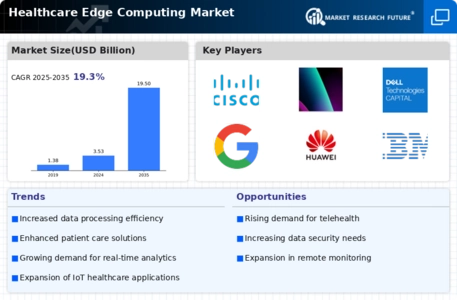Healthcare Edge Computing Market Summary
As per MRFR analysis, the Healthcare Edge Computing Market was estimated at 3.345 USD Billion in 2024. The Healthcare Edge Computing industry is projected to grow from 3.99 USD Billion in 2025 to 23.3 USD Billion by 2035, exhibiting a compound annual growth rate (CAGR) of 19.3 during the forecast period 2025 - 2035.
Key Market Trends & Highlights
The Healthcare Edge Computing Market is poised for substantial growth driven by technological advancements and evolving healthcare needs.
- North America remains the largest market for healthcare edge computing, driven by robust healthcare infrastructure and technological adoption.
- The Asia-Pacific region is emerging as the fastest-growing market, fueled by increasing investments in digital health technologies.
- Services represent the largest segment in the market, while hardware is anticipated to be the fastest-growing segment due to rising demand for advanced devices.
- Key market drivers include the rising demand for real-time data processing and the integration of artificial intelligence and machine learning in healthcare applications.
Market Size & Forecast
| 2024 Market Size | 3.345 (USD Billion) |
| 2035 Market Size | 23.3 (USD Billion) |
| CAGR (2025 - 2035) | 19.3% |
Major Players
Amazon (US), Microsoft (US), IBM (US), Google (US), Cisco (US), Dell Technologies (US), Hewlett Packard Enterprise (US), Oracle (US), Edgewise Networks (US), NVIDIA (US)

















Leave a Comment